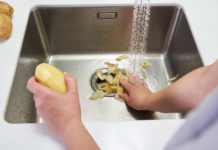Moving a large tank can be a daunting task because of its size and fragility. However, with proper planning, you can ensure all elements stay secure.
Without a well-thought-out strategy, there is a risk of damage to the tank or stress to the fish. Thankfully, there are several practical tips to make the process easier.
This step-by-step guide will help you relocate your aquarium with ease and confidence. Ready to dive into the details?
Assessing the Situation
Before moving a large tank, assess its current setup. Check if it is heavy and determine whether assistance or tools will be needed. Ensure that the new location is stable enough to support the fish enclosure.
Additionally, choose a suitable time for the move, preferably when it is less busy or the weather is calm, to avoid stressing the fish.
Prepare a list of necessary items, such as fish containers and safety gear. With proper preparation, the move should proceed smoothly.
Collecting Necessary Equipment
Moving a tank requires careful planning. Begin by gathering the required materials to ensure a safe transfer for both your aquatic pets and their habitat.
Start by getting sturdy containers to keep your fish secure. Insulated boxes help maintain a stable water temperature, keeping your fish comfortable. Use durable sand or gravel bags to avoid creating a mess.
Later, wrap the tank in bubble foam to protect it from damage. Moreover, prepare all your supplies, such as a siphon to drain the water, towels for any spills, and packing tape to keep everything secure.
Prepping the Aquarium for Safe Travel
Start by disconnecting all electrical equipment connected to your fish tank, such as filters, heaters, and lights. Then, let the enclosure rest for about 30 minutes before removing the water. This waiting period helps calm the fish and reduces the disturbance of debris.
Afterwards, a siphon is used to drain approximately 75% of the water carefully and store it in clean containers for the move. This preserved water contains essential bacteria that support the fish’s health.
Make sure to scoop all the gravel or sand from the tank and seal it in bags to avoid any spills during transport. Later, pack any decorations in cushioned boxes to ensure they remain intact.
Wrap the entire tank carefully with padded blankets, foam, and tape to prevent any damage. Additionally, label all bags and boxes clearly to make the setup process easier when you arrive at your new location.
Before proceeding, focus on the health and safety of your fish. Therefore, they should be transferred into secure, oxygenated containers such as plastic bags or small travel tanks, and the temperature should remain stable to reduce stress.
Furthermore, battery-operated air pumps are used to maintain a continuous oxygen flow during the move.
Overall, by following these steps, you will safeguard both your tank and its little inhabitants, ensuring a smooth and hassle-free relocation.
Removing Water and Packing Securely
First, empty about 80% of the water in the tank, but keep the remaining water in bottles that are clean and well-labelled. You will use this water again when you set up your new home because it contains vital nutrients that your fish require to stay healthy.
Moreover, to prevent clutter during the relocation, gently scoop out the sand or gravel and put it in tight bags. For protection, pack each decoration separately in cushioned boxes after wrapping it in foam or bubble wrap.
Furthermore, to avoid scratches or cracks, cover the enclosure itself with foam or padded blankets. Later, fasten it with straps to protect it during transport.
Place towels under the tank to absorb leaks and keep the car dry. Lastly, to maintain a constant temperature and minimal stress, transfer your fish to covered, insulated containers.
Transporting the Aquarium
Before beginning your journey, ensure that your tank is closed well to prevent any accidental movement. In accordance, wrap it in soft padding to protect it from dislodging, and avoid placing heavy objects on top to prevent the glass from cracking.
Moreover, choose routes with smooth surfaces and minimal stops to ensure a steady and stable journey. Take regular breaks to check the setup’s stability.
Maintain the fish containers at the proper temperature, especially during extreme weather. They should be placed in areas where temperature control and good airflow are available. This helps preserve the essential bacteria needed for the fish’s health.
A battery-powered air pump maintains optimal conditions. Moreover, it ensures that the fish stays comfortable and that good bacteria remain active.
Consequently, it is wise to prepare for potential disruptions by bringing additional items like extra oxygen or a portable air pump.
Setting up at the New Location
After you arrive at your new location, place the fish enclosure on a flat, stable surface to prevent it from tipping over when filled.
After positioning the aquarium, set up essential equipment like filters and heaters. Then, start with the saved water, as it contains beneficial bacteria that help maintain balance in the tank.
Then, gradually add fresh water. This ensures it matches the temperature and pH, minimising stress on the fish.
Moreover, carefully return the decorations and gravel to help the fish settle. To acclimate them to the new tank, float their containers in the water to balance the temperature and then slowly help them adjust
After they are ready, gently release the fish into their habitat and monitor their condition. This careful process will make the transition smoother and ensure both your aquatic buddies and tank remain in good health.
Post-Relocation Fish Care
After you have moved your tank, keep a close eye on the fish and their new setup. In addition, check the water’s temperature, pH levels, and ammonia regularly because changes can stress them.
Later, swap out some of the old water with fresh, chlorine-free water to keep it clean and steady.
In the first few days after the move, avoid overfeeding the fish, as excess food can disrupt the water quality. Observe their behaviour closely—if they are swimming abnormally, refusing to eat, or hiding frequently, it could indicate a problem.
Allow the fish time to adjust to their new home without unnecessary disturbances. A calm and stable environment will help them settle comfortably.
Engaging Specialised Movers
A large tank relocation could require professional removal services. These experts have the tools and experience to ensure a safe and efficient move from point A to point B.
When selecting a moving provider, choose one with experience in handling aquarium relocations.
Be sure to clarify your specific requirements with them, such as the tank size and destination. This proactive approach will help guarantee a successful and seamless relocation.
Consider obtaining insurance protection for unexpected incidents. Initially, it can seem costly, but their expertise and dedicated tools save time and potential challenges.
Conclusion
Transporting a tank can present certain challenges. However, with adequate planning, the process can proceed seamlessly.
Ensure you prepare everything you need and handle the tank components carefully, especially when draining the water.
Take your time settling the aquarium into its new space, paying close attention to each detail so your aquatic friends feel at ease. By following these suggestions, you will create a stress-free transition for both the enclosure and its inhabitants.




